Torreya taxifolia (Stinking Cedar, Florida Nutmeg, Florida Torreya, Gopher Wood, or Stinking Yew)
Botanical Information
| Family | Taxaceae |
| Genus | Torreya |
| Species | taxifolia |
| Category | Tropicals, Woody |
| Type | Shrub (evergreen) |
| Origin | Native to Florida and Georgia. "Florida Torreya (Torreya taxifolia) is a critically endangered conifer. It only grows wild along the Apalachicola River in north Florida and adjacent regions of southwestern Georgia. It is slow growing and will grow as a large shrub or small tree. It prefers a moist acidic soil in partial shade or bright shade." |
Details
| USDA Hardiness Zone | 5 to 9 |
| USDA Hardiness Ref. | |
| Canadian Hardiness Zone | 8 |
| Canada Hardiness Ref. | |
| RHS Hardiness Zone | H7 - H4 |
| RHS Hardiness Ref. | |
| Temperature (°C) | -18 - (-9) |
| Temperature (°F) | 0 - 15 |
| Growth | Medium |
Description and Growing Information
| General Description | Torreya taxifolia, commonly called Florida torreya, is a dioecious, small to medium sized, evergreen, coniferous tree. |
| Shape | Upright pyramidal to irregular weeping bordering on the unkempt. |
| Propagation | Seed requires from 6 months to 4 years to germinate. |
| Cultivation | Best grown in moist, rich, well-drained soils in part shade but tolerates full shade. Do not allow soils to dry out. |
| Notable Specimens | Bok Tower Gardens, Lake Wales, Florida, United States of America. Harry P. Leu Gardens, Orlando, Florida, United States of America. |
| Habitat | Found along bluffs, slopes and wooded ravines on the east side of the Apalachicola River in Liberty and Gadsden Counties in Florida plus in adjacent Decatur County, Georgia. |
| Leaf Description | Leaves are stiff, glossy, sharp-tipped, linear, needle-like, bright green leaves, each to 2 - 3 cm long and 3 mm wide, in 2-ranks, with each leaf having two blue-white stomatal bands beneath. |
| Flower Description | This tree is dioecious (male and female cones on separate trees). Male cones appear in the axils of the needles of the prior year. Female cones appear in the axils of the needles of the current year but do not ripen until the second year. |
| Fruit Description | Olive-like fruit to 3 cm long, a single seed covered by a fleshy aril, striped with purple. Seed colour is reddish to brown. |
| Texture Description | Foliage and twigs emit a fetid odour when crushed, hence the sometimes used common name of stinking cedar. |
Photographs
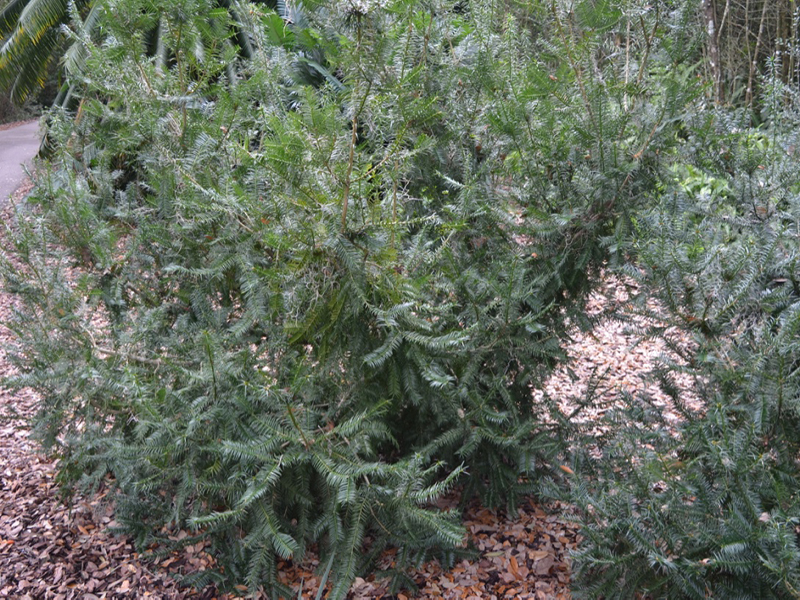
Torreya taxifolia, form, Bok Tower Gardens, Lake Wales, Florida, United States of America.
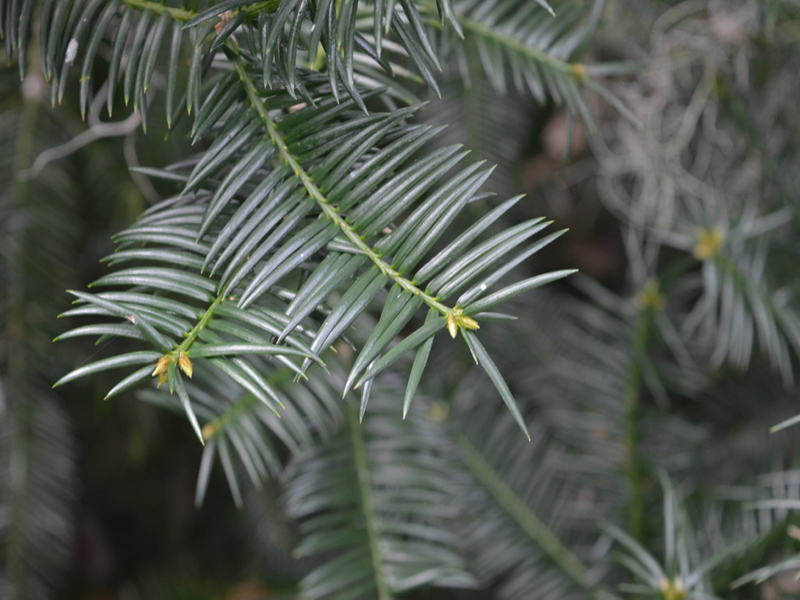
Torreya taxifolia, leaf, Bok Tower Gardens, Lake Wales, Florida, United States of America.
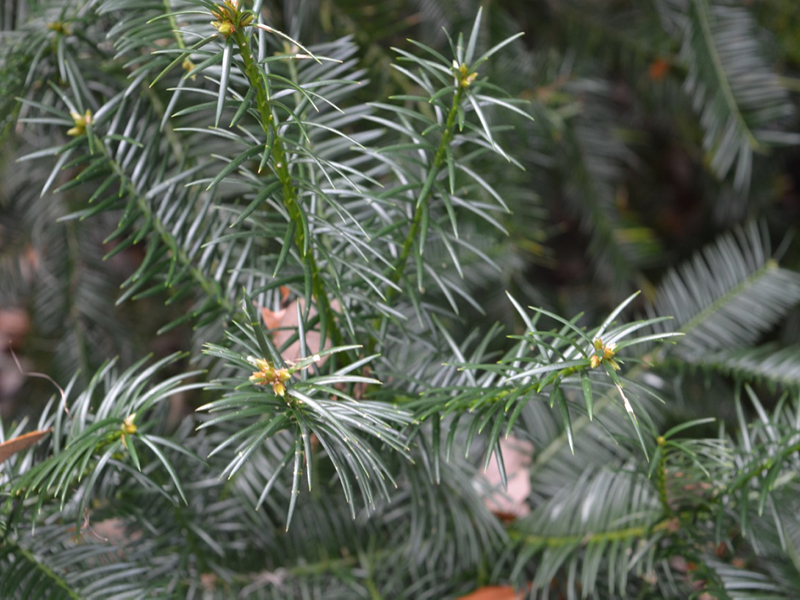
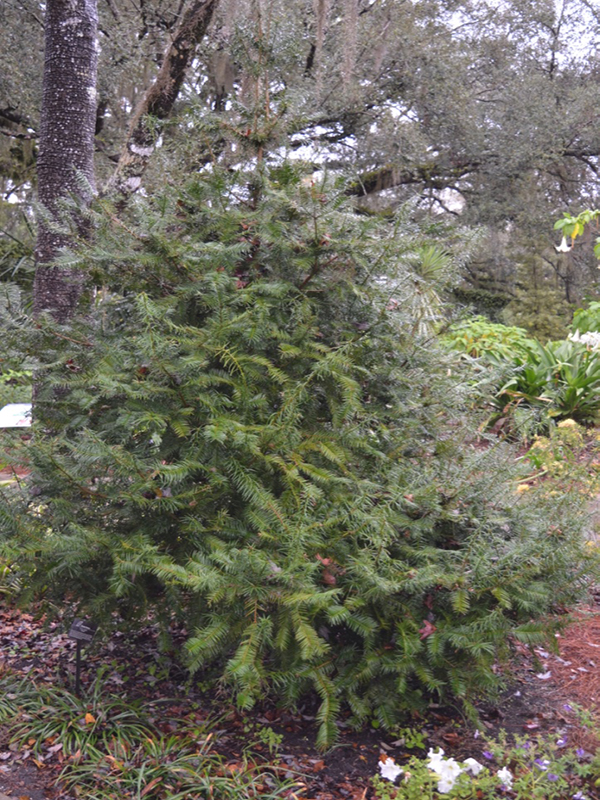
Torreya taxifolia, leaf, Harry P. Leu Gardens, Orlando, Florida, United States of America.
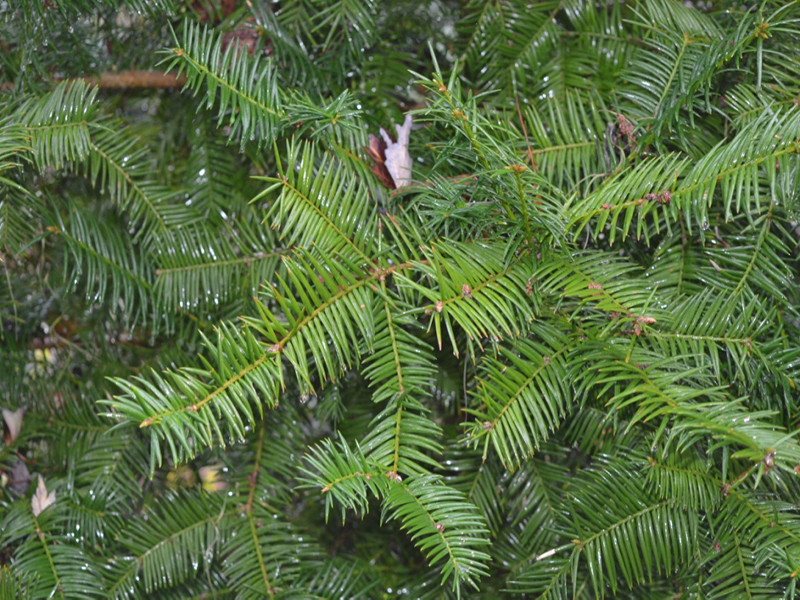
Torreya taxifolia, leaf, Harry P. Leu Gardens, Orlando, Florida, United States of America.